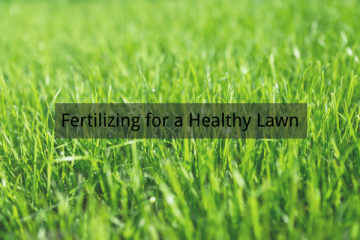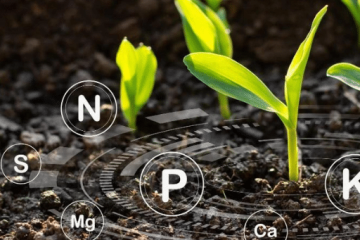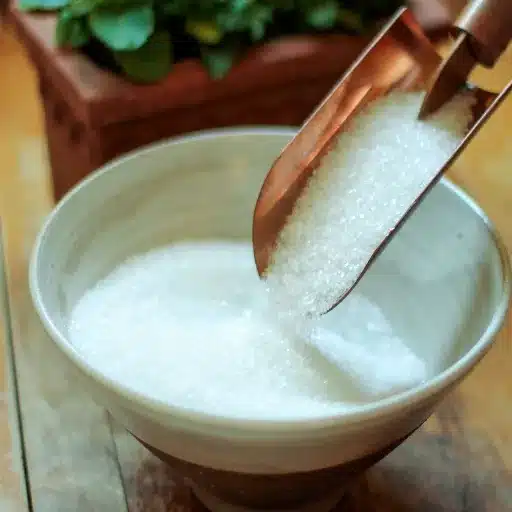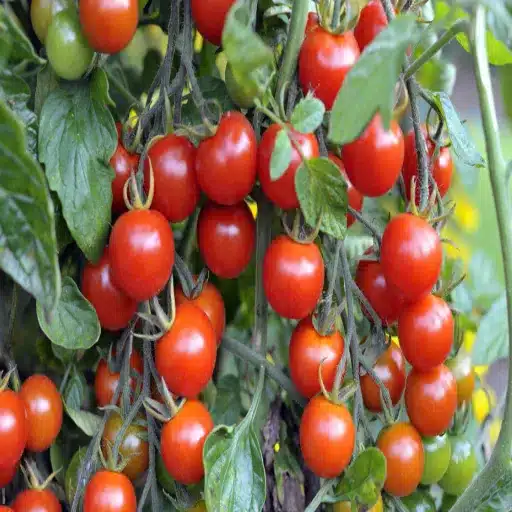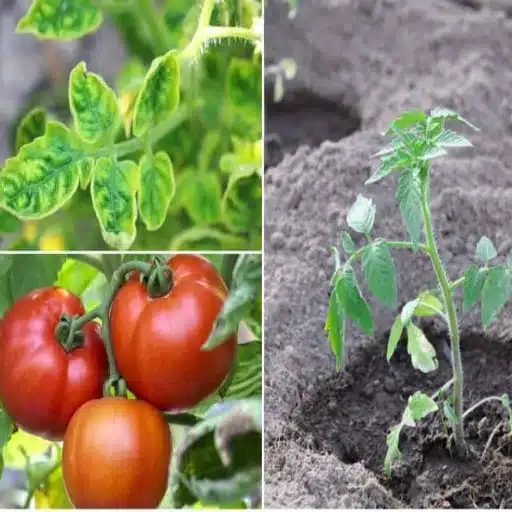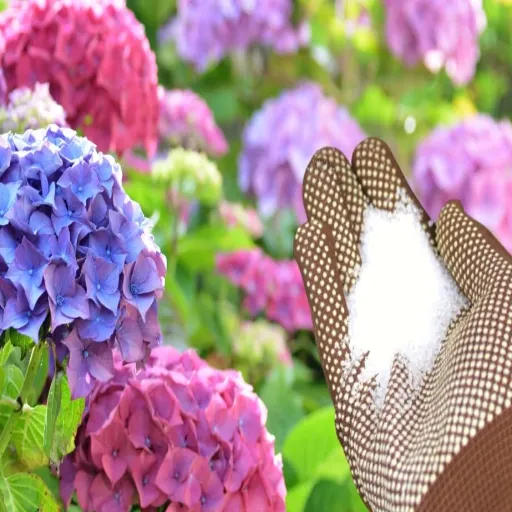Plant care can be an art and a science at the same time. The natural and effective ways to enhance the health of plants are always under watch by the gardeners, and Epsom salt has become a very popular choice among the hobbyists. But what is the exact benefit of Epsom salt and water mixture to the plants and what are the ways to ensure that you are using it right? This guide not only points out the practical and scientific advantages of Epsom salt in gardening but also presents the steps and tips needed to use it to the full. It does not matter if you are an experienced gardener or a beginner, you will get practical insights that will support you in your effort towards plant thriving.
Understanding Epsom Salt
What is Epsom Salt?
Epsom salt is a mineral compound consisting of magnesium sulfate, which is also its scientific name. It is a natural mineral and a mixture of three elements: magnesium, sulfur, and oxygen. The salt is named after a saline spring in Epsom, England, where it was discovered for the first time. Epsom salt is mainly used for its mineral properties since it has no sodium like table salt, which contains a lot of sodium.
The main constituents of Epsom salt, that is, magnesium and sulfur, are very important for the growth of plants. Magnesium stands at the base of photosynthesis, as it allows plants to make chlorophyll, which is the green pigment responsible for the conversion of sunlight to energy and, thereby, the production of food for the plants. Besides, magnesium is very important in the processes of nutrient absorption, whereby plants take up minerals that are very essential for them, like nitrogen and phosphorus. Sulfur, on the other hand, helps in the synthesis of amino acids, enzymes, and proteins that are essential for healthy plant growth.
Epsom salt dissolves very easily in water, which means that one can easily apply it to plants in the soil or as a foliar spray. Its effectiveness and versatility have contributed to its being a low-cost popular addition to gardening. Nevertheless, the application of Epsom salt should be done according to specific plant needs and soil conditions to prevent overuse, which may result in the overall health of your garden being adversely affected.
Chemical Composition and Properties
Epsom salt, chemically referred to as magnesium sulfate (MgSO₄·7H₂O), consists of three elements: magnesium, sulfur, and oxygen. Among them, magnesium acts as an essential nutrient that facilitates the realization of several biological processes in plants, its most important roles being the production of chlorophyll and activation of enzymes; while sulfur, on the other hand, helps to create the building blocks for amino acids and proteins. The term “heptahydrate” refers to the presence of seven water molecules that are responsible for making the salt highly soluble in water.
High solubility is one of the most important characteristics of Epsom salt that makes it possible for the plant roots or leaves to absorb the salt directly if the application is done in a right manner. The combination of magnesium and sulfur in Epsom salt makes it highly efficient as a soil amendment especially in magnesium-deficient soils that are usually found in sandy or acidic areas. It dissolves quickly in water making it possible to use as a foliar spray or by mixing it into irrigation systems for accurate application.
Gardeners must test their soil to ascertain the levels of magnesium and sulfur prior to Epsom salt application in order to get the maximum benefit from it. Application of Epsom salt in excess can lead to the nuissance of nutrients, thus causing damage to plants or their insulation from other vital nutrients. Nonetheless, the application of Epsom salt in the right way will ensure that Epsom salt keeps being an affordable, convenient, and a powerful solution for plant health boosting and growth supporting.
Why Gardeners Love Epsom Salt
Epsom salt is a favorite of the gardeners as it not only is an easy but also an effective way to improve plant health. The main advantages come from its essential constituents, magnesium, and sulfur involved, which are the vital nutrients for plant growth. Magnesium is essential for the formation of chlorophyll, thus allowing plants to be effective in photosynthesis, sulphur on the other hand, facilitates the functioning of enzymes and the synthesis of proteins, thereby playing a vital role in plant metabolism.
The fact that it is versatile also made it one of the renowned salts. Epsom salt can be used on an extensive range of plants like vegetables, flowers, and fruit trees. It is a common practice amongst gardeners to apply it and correct nutrient deficiencies as well as promote strong growth especially in plants like tomatoes, roses, and peppers. Besides, it is very easy to use, whether dissolved in water to be used as a foliar spray or put directly into the soil for slow absorption.
Ultimately, Epsom salt is a low-cost and easy-to-get product, which is thus a handy tool for both novice and veteran gardeners. Its chemical composition and user-friendliness are very much in favor of organic gardening, as it is a solution that can rejuvenate plants without the need for synthetic fertilizers. The combination of being effective, multipurpose, and cost-efficient is what keeps Epsom salt as a top choice in all the gardens across the planet.
Benefits of Using Epsom Salt for Plants
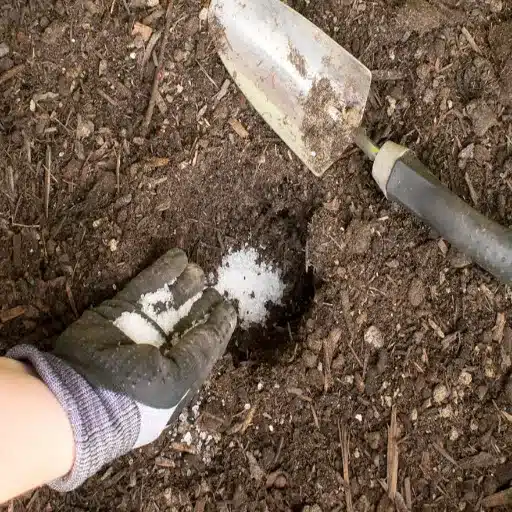
Nutrient Boost for Plants
Epsom salt is a nutrient-rich mineral that is very helpful in the growth and development of plants. The main ingredients of Epsom salts, magnesium, and sulfur are very significant and indispensable to plants as they have a variety of biological processes in plants. The following are the top five benefits that emphasize Epsom salt as a nutrient booster:
- Better Chlorophyll Production:
Magnesium in Epsom salt is the basic component in chlorophyll — the pigment which is the reason behind photosynthesis. The magnesium can then be supplemented by the plant leading to more production of chlorophyll and thus the leaves will be greener and there will be more energy produced.
- Better Nutrient Absorption:
Sulfur in Epsom salt helps in the soil absorption of phosphorus and nitrogen that are very essential for the plant to grow and bloom.
- Stronger Root Systems:
Epsom salt assists in the formation of strong root systems by helping in the formation of cell walls. A well-developed root system is very necessary for the plant to acquire water and nutrients.
- Aids Flowering and Fruit Production:
A lack of magnesium can slow down the process of flowering and fruiting. Epsom salt acts as a corrective measure and thus facilitates the blooming of plants and at the same time increasing the yield of fruits.
- Nutrient Deficiencies Prevention:
If used regularly, the plant will not suffer from magnesium and sulfur deficiencies which are usually reflected by yellowing leaves or decreased growth. Epsom salt is a good solution to these deficiencies as it takes care of them and enforces the health and productivity of the plants.
The above advantages are what make Epsom salt a must-have for every gardener’s arsenal, as it not only allows the plants to be lush and colorful but also guarantees a high yield.
Enhancing Flower Growth
Epsom salt has a major impact on flower growth, turning the flowers more vivid and plentiful. It provides nutrients and at the same time helps in soil amelioration, thus bringing the plants to their full potentials. Below are five important ways Epsom salt facilitates flower growth:
- Boosts Chlorophyll Production:
Magnesium, the principal ingredient of Epsom salt is basically the building block of chlorophyll. Thus, this enhances the greener of the plants and the vigor of the plants and their ability to produce top-notch flowers.
- Encourages Larger Blooms:
Frequent use of Epsom salt makes the plants more efficient in nutrient absorption, thereby larger and brighter flowers being produced with increased longevity.
- Improves Soil Nutrient Availability:
Epsom salt raises the nutrient level in the soil for the flowers making it easier for the plants to absorb the nutrients. Therefore, the flowers are assured of getting the nutrients that they need for their growth.
- Enhances Root Development:
When the sulfur in Epsom salt pulls the plants deeper roots, the plants becomes more capable of drawing moisture and nutrients from the soil which in turn supports the flowering stage of the plant.
- Stimulates Flowering in Certain Plants:
Epsom salt is very efficient in stimulating flowering plants, like roses and orchids. Regular application increases the flower production and the color intensity of the plants.
Epsom salt is a must in your gardening practice if you want to gain the advantage of flowers that are not only beautiful but also full of life in the garden.
Improving Seed Germination
The application of Epsom salt can be of utmost importance in the process of seed germination by offering an environment conducive to seed sprouting. Magnesium, which is present in Epsom salt, is a crucial element for the development of seeds and the growth of plants in the early stages, thus, giving the seedlings the power to be stronger and healthier by providing them with the nutrients they need. Here are five ways Epsom salt helps in seed germination:
- Enhances Seed Energy:
A main reason why seeds are able to produce the energy needed for their germination and establishment of strong roots is the role of magnesium in photosynthesis.
- Balances Soil pH:
The use of Epsom salt in the garden can regulate pH levels of the soil and thus allow seeds to germinate in a more suitable environment, free from the negative effects of extreme acidity or alkalinity.
- Prevents Nutritional Deficiencies:
Magnesium and sulfur deficiencies, which are among the factors that hinder healthy seedlings’ growth, are alleviated by Epsom salt added to the soil.
- Boosts Seedling Growth Rate:
Epsom salt application results in the seed’s vigor being increased and the time needed for sprouting being reduced when compared to untreated seeds.
- Improves Root Development:
Directly, the nutrient magnesium helps the roots, thus, ensuring that seedlings are born with a stronghold and can effectively draw moisture and nutrients from the surrounding area.
Making use of Epsom salt can tremendously increase the likelihood of seed germination being successful, resulting in stronger plants and greater overall yield in your garden.
How to Use Epsom Salt in Your Garden
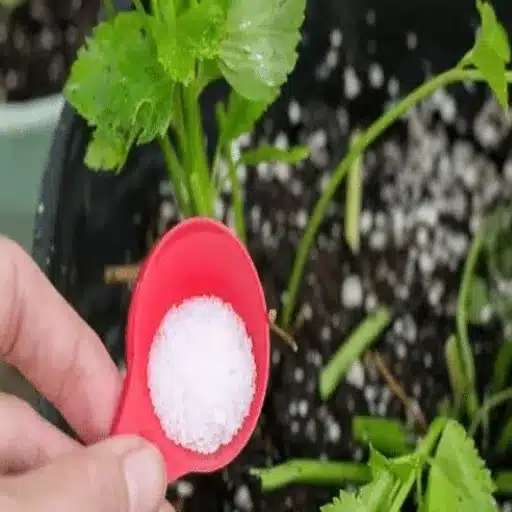
Mixing Epsom Salt and Water: The Right Ratios
Proper mixing ratios are crucial for the effective garden use of Epsom salt. For general gardening applications, one should dissolve 1 tablespoon of Epsom salt into 1 gallon of water. The resultant mixture can either be used as a foliar spray or poured directly into the soil. For houseplants or bush-grown vegetables, the making of the solution use a lower ratio of 1 teaspoon of Epsom salt for every gallon of water in order to avoid over-fertilization. This way, plants will get enough magnesium without suffering from an excess of it.
| Application Type | Ratio | Usage |
|---|---|---|
| General Gardening | 1 tablespoon per 1 gallon water | Foliar spray or soil drench |
| Houseplants/Bush Vegetables | 1 teaspoon per 1 gallon water | Regular watering |
| Heavy Feeders (Tomatoes, Peppers, Roses) | 2 tablespoons per 1 gallon water | Root application every 2 weeks |
Certain plants, like tomatoes, peppers, or roses, will definitely benefit from the use of Epsom salt as they are usually the ones taking up most magnesium. In such cases, dissolve 2 tablespoons of Epsom salt in 1 gallon of water, and pour it at the root of the plants every fourteen days during the growth period. Likewise, using this mixture as a shrub spray can be a quick way to rectify magnesium deficiency in the plants since the mineral is absorbed more through the leaves.
Never forget that too much Epsom salt can eventually cause soil imbalance that could kill the plants if not taken care of early. Always keep an eye on the soil and the plants’ health as well. Besides, giving Epsom salt as part of the fertilizing routine rather than alone would be the best way to get the most out of it. Being aware of this fact and combining the information with modern gardening techniques your garden will always be a productive and thriving ecosystem.
Applying Epsom Salt to Different Plants
Epsom salt or magnesium sulfate, its chemical name, is a plant-friendly compound when applied in the correct way. Tomato, a plant variety that likes magnesium dosage in large amounts, can be the beneficiary of Epsom salt application as it would prevent yellowing of leaves and blossom-end rot, among others. One can apply the mix of one tablespoon Epsom salt and one gallon water as a foliar spray or a soil drench throughout the growing season. This practice guarantees tomatoes will not only be healthy but also bear fruit of good quality.
Roses get the help of Epsom salt to be the most colorful and to show the most vigorous growth. Every month, sprinkle about a tablespoon of Epsom salt around the base of each rose bush and water well. The magnesium in the Epsom salt plays a major role in strengthening the plant’s cellular structures, thereby allowing better nutrient uptake and enhanced overall health of the roses. As such, the gardeners often report that the leaves are thicker and the number of flowers more than usual because of this practice.
On the flip side, spinach and other leafy greens like kale can be the occasional Epsom salt treatment also. The nutrition of these plants is dependent on magnesium, and their healthy photosynthesis is a consequence of that. Dissolving one teaspoon of Epsom salt in a quart of water and misting the plants every two weeks is a gentle way of helping them grow. However, it is crucial to always check the soil quality and watch the plants’ reactions before applying Epsom salts to ensure the proper balance and prevent overuse. The plants in the garden will all be thriving and in harmony if such customized care is given to each one of them.
Best Times to Apply Epsom Salt
The application of Epsom salt at a time that is appropriate has a powerfully positive effect on the health and yield of plants. Most plants can perfectly tolerate Epsom salt application during their active growth season, especially in spring and in the early summer, when the plants are creating their roots and leaves. At this time of the year, the plants require more magnesium and sulfur than usual, and Epsom salt contains both of these elements. Early application helps to get them the nutrients they need as they are moving into the flowering or fruiting stage. In the case of vegetables such as tomatoes, pepper, and roses, the application of Epsom salts can be made every other week regularly and this will help flowers to be more vivid and yield healthier.
⏰ Optimal Application Timing:
- Season: Spring and early summer during active growth
- Time of Day: Early morning or evening
- Avoid: Peak afternoon hours with intense sunlight
Morning or evening the solution should be applied to the plants that are treated with Epsom salt. Early morning allows the solution to be taken up by the soil before the sun starts to dry up the moisture, thus penetration and effectiveness are better. Similarly, evening application works as an overnight period for the nutrients to be taken up without the risk of wash-off due to heat or wind. Do not apply Epsom salts during the peak afternoon period because the intense sunlight and heat that accompany it may hinder the absorption and even cause the plants to be stressed.
It is important to sync the Epsom salt application with the plant’s lifecycle and demand for nutrients as well. For instance, houseplants get monthly Epsom salt water treatments, thus keeping their nutrient requirements at a minimal level for constant growing. Lawn grass receives Epsom salt treatment in spring for a winter-dormant period and then gets another treatment in fall to develop roots. Watching the soil’s productivity and the timing of your amendments according to the seasons means that your plants will have the exact amounts of magnesium and sulfur necessary for the creation of a healthy and well-balanced gardening ecosystem.
Potential Drawbacks and Considerations
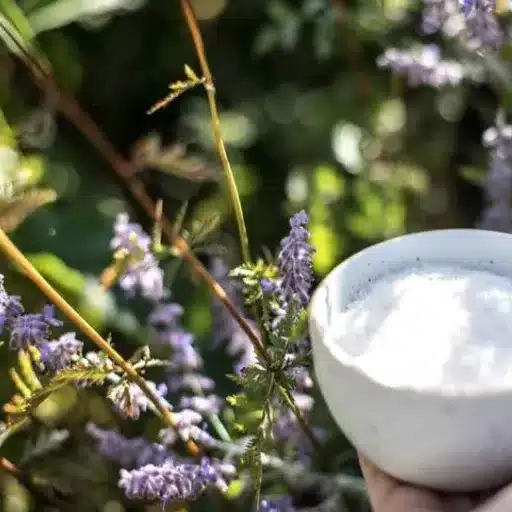
When Epsom Salt May Not Be Beneficial
Epsom salt can be beneficial for plants in many ways, but it is not an infallible solution, and its use might sometimes be detrimental. When Epsom salt is applied in excessive amounts, it could result in magnesium building up in the soil which would alter the nutrient’s balance unfavorably and thus plant growth caused by this change would also be hindered. Magnesium in excess may corrode nutrients, for example, calcium or potassium, resulting in a plant deficiency that can lead to the plant losing vitality. Therefore, soil testing becomes a prerequisite to Epsom salt application in order to make sure that magnesium and sulfur levels are not already adequate.
⚠️ Plants That May Not Benefit from Epsom Salt:
- Beans
- Lettuce
- Plants naturally thriving in low-magnesium conditions
Another factor one should keep in mind is the classification of the plant. There are certain plants that do not get any advantage from Epsom salt treatment as some of them are the ones that naturally flourish in low-magnesium conditions. As an instance, beans and lettuce plants are not needing a magnesium supply and may even getting stressed by that if it is given to them too much. Further, if the application is too frequent, it might lead to water contamination when magnesium in excess is washed by rain into water sources nearby and thus negatively affecting aquatic ecosystems.
To sum up, Epsom salt wouldn’t be of any help in case the problem was due to poor soil structure, lack of organic matter or low content of phosphorus and nitrogen. These are typical causes of unoptimal plant health, and wrongly diagnosing the issue will result in either useless or even harmful gardening practices. Regular soil testing and com-posting can be combined with Epsom salt application to maintain soil health and fertility in the long run, which is the best way to deal with Epsom salt, a part of a wider holistic soil management strategy. This balanced approach will result in the environment being conducive to gardening that is both productive and sustainable.
Signs of Overuse
Epsom salt can help certain plants but if used too much it can even cause damage to the plants and soil. One of the main indicators of its overuse is the increase of magnesium in the soil which can lead to the disruption of the nutrient balance for the other essential nutrients like calcium and potassium. This thing can result in the stunted growth of the affected plant, yellowing of the leaves, and sometimes even nutrient deficiency in the soil despite fertilization. Because of this, overaccumulation of the salt can also hurdle the soil from getting and retaining the precious nutrients that are needed for healthy plants.
| Warning Sign | Description | Impact |
|---|---|---|
| Nutrient Imbalance | Excess magnesium disrupts calcium and potassium | Stunted growth, yellowing leaves, nutrient deficiency |
| High Soil Salinity | Excessive salt accumulation in soil | Wilting, browning leaves, poor water uptake |
| Environmental Pollution | Magnesium runoff into water bodies | Water contamination, ecosystem disruption |
Soil salinity is another sign of Epsom salt overapplication. High salinity levels make it hard for the plants to take up water efficiently which results in wilting or browning of leaves. Gradually, excessive salt in the soil can negatively affect its structure leading to poor aeration and water infiltration. Lots of root growth and soil microorganisms will not happen in such an unfavorable environment which will in turn adversely affect the long-term health of the soil. Regular soil testing can be used as an early warning system for salinity problems and to facilitate implementing corrective actions.
Excessive use of Epsom salt, besides the aforementioned adverse effects, can also lead to the pollution of water and the ecosystem around it. The reason being that runoff carries magnesium to the water bodies. The water body with high magnesium may lose its originality and hence, may get polluted. If pollution prevention is the main scenario among the gardeners that are using the application of Epsom salt, it is necessary to keep an eye on the amount and the frequency of the application. Having to stick to the suggested guidelines and using a mix of soil amendments will make sure that the plants are healthy and that there is less impact on the environment.
Balancing Nutrients in Soil
Testing the soil is my first step whenever I want to attain the best possible soil health. This way I will know what nutrients are there in the soil and in what proportions so I will be able to work along with the soil rather than just using it. Through the pH and nutrient analysis I will know the exact measures like to add lime to increase pH or to add sulfur to decrease it and thus making sure that plants have access to essential nutrients without difficulty.
The next step of mine is to put into the soil organic matter, like compost, etc. The organic matter will not only add the crucial nutrients like nitrogen, phosphorus, and potassium but also support the soil in its physical and chemical properties, as well as being the energy source for the soil microbes. So, these additions along with the use of organic fertilizers or targeted mineral amendments can help me create a nutrient-rich, sustainable growing medium. The practices of crop rotation and cover cropping help to further maintain soil fertility as they prevent nutrient depletion and at the same time, they keep soil health for the long term.
On the other hand. Excessive application can cause nutrient imbalances and environmental problems, so I only use what plants need based on the soil test results. By measuring and timing my amendments accurately, I make sure that plants get the nutrients they need and at the same time no runoff or pollution is being caused. It is a continuous process to keep the soil nutrients balanced, but with good monitoring and taking the right sustainable practices, I can grow healthy plants and still save the environment.
Combating Pests with Epsom Salt
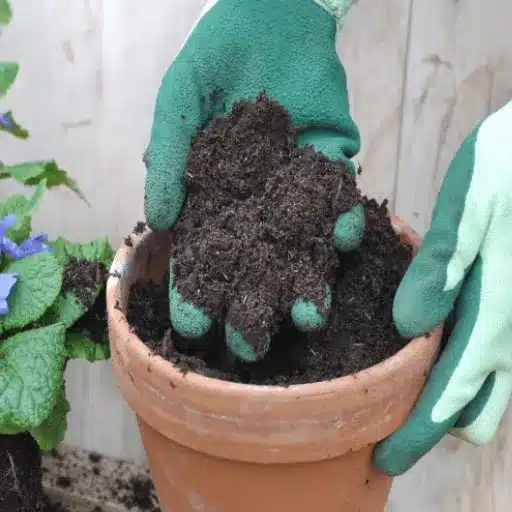
Natural Pest Deterrent Properties
Epsom salt, referred to as magnesium sulfate in its purest form, is a substance that is not only a nutrient for plants but also for its naturally pest-repelling quality. Epsom salts when used around the plant’s bases can be a safeguard for the plants against slugs and snails. These insects, especially the snails, will not venture over and thus will not harm the plants. Besides case of injury their bodies also suffer irritation from touching the coarse grains, which in effect leads to the safeguarding of the plants. Although it is natural in origin, it acts as a pest control hence regarded as an eco-friendly method, and thus organic gardening and insect-friendly aiming methods become safer areas.
The studies conducted on the pest deterrent properties of magnesium sulfate indicate that it could go as far as preventing tunneling pests like voles or gophers because of the implicit changes in soil composition or the unpleasant aroma. However, as the studies are still ongoing, Epsom salt’s credibility as a non-conventional pest control measure is only through the legends around its use. Additionally, the fact that potency of Epsom salt as a plant nutrient and natural pest deterrent are both powerful aspects plus its versatility make it possible for one to Agricultural cultivate with multipurpose matters, that is, the ones who require less space and are hence more economical.
Gardeners, who are Epsom salt users, should consider integrated pest management along with crop rotation, companion planting, and regular monitoring among others as part of the strategy. This is because, Epsom salt, being soluble in water, should be reapplied every time there is heavy rain to ensure its effectiveness lasts. By making use of non-harmful natural substances such as Epsom salt, gardeners will gradually decrease their reliance on synthetic chemicals, thus the soil quality and biodiversity will be retained while at the same time raising and maintaining the garden eco-system’s resilience to pests.
Using Epsom Salt in Pest Control Solutions
Epsom salt, which is also known as magnesium sulfate, is a natural cleaner and pest repellent. Epsom salt has been used for these purposes in the garden for a long time and is again being considered as an eco-friendly option in pest control practices. The latest studies have shown that slugs and beetles, which are a common garden problem, would not want to live in a garden with Epsom salt in it. Gardeners can start off with Epsom salt by scattering it around the plant’s base, or they can make it into a solution for watering or spraying the plant. It has the ability to control both pest and plant health because magnesium is such an important nutrient in the photosynthesis process of plants and in their overall growth.
💡 Application Methods for Pest Control:
- Scatter dry Epsom salt around plant bases
- Mix into solution for watering
- Create foliar spray for direct application
- Reapply after heavy rain for continued effectiveness
On the other hand, the capability of magnesium sulfate as a pest deterrent may not be scientifically proven at the moment, yet, there are a lot of parent gardeners out there who still continue using it as a common practice worldwide. If used correctly, Epsom salt can be combined with other preventive measures by for example, removing garden debris regularly, handpicking visible insects, and using barriers or traps. If performed simultaneously, the use of Epsom salt in this manner can lead to a healthier garden environment free from pests and not resorting to harmful pesticides.
No matter how good Epsom salt is, being a natural product, its excess use can leave a residue of bad soil nutrients. The buildup of magnesium might cause disturbances in the proportion of calcium and potassium, the two most dominant nutrients needed for the best plant growth. Hence, it is important to use it only as per the recommended schedule and to do soil tests from time to time. When used in conjunction with the new eco-friendly gardening practices of biological pest control and organic composting, Epsom salts can be considered an efficient and environmentally sound approach to promoting plant growth and preserving the ecosystem at the same time.
Success Stories from Gardeners
🍅 Suburban Garden Transformation
Numerous gardeners have recounted the convincing narratives of Epsom salt’s power to change their gardens for the better and, consequently, much more attractive and healthier plants. One of these narrations is from a gardener living in a suburb who had been having yellowing tomato leaves and erratic fruit production for several years. Edging Epsom salt to foliar diet at the beginning of growth, they saw an overall rise in the health of foliage and the quantity of fruits. Not only did deep green leaves and plentiful, tasty tomatoes show us the favorable impact of magnesium sulfate on crops that possess the trait of needing extra magnesium for perfect photosynthesis and growth, but also the splendid success of this initiative produced a garden full of life and already encouraged the residents of the area to apply eco-friendly, budget-friendly gardening techniques in their gardens.
🌱 Community Garden Revival
Another extraordinary tale comes from a community garden project that aimed to bring back life into polluted urban soil. This was a massive and collaborative effort: volunteers working hard applying Epsom salt along with organic compost to improve not only the soil structure but also its nutrient content. Gradually, they would start to see the appearance of tough and healthy seedlings, increase in flowering of crops like peppers, beans and roses, as well as very good and fast germination rates in general. The project was thus oe the most successful and, gardeners and community members alike were happy seeing how such a tiny step on the soil could lead to big changes in the entire neighborhood.
🌹 Rose Bush Recovery
The last but not least, a flower lover from the Pacific Northwest admitted that when they used Epsom salt as a treatment, they could even successfully revive rose bushes that had fallen victim to chlorosis, a common affliction due to magnesium deficiency. The fading greens and production of blossoms were soon noticeable even to the untrained eye after just one month of the couple of Epsom salt sprinkling along the base of each bush and watering it in. The once wizened-looking, smell-good-producing roses became the delight of the neighboring gardeners, proving once more that even the most sensitive plants can be saved by simply applying a natural and harmless remedy that is well-known. All these heartwarming accounts of the use of Epsom salt in gardening highlight not only its efficiency as a plant health facilitator but also compatibility with nature.
Frequently Asked Questions (FAQ)
Q: What is the benefit of combining Epsom salt with water for plants?
A: The combination of Epsom salt and water for plants supplies magnesium and sulfate, which are very necessary nutrients that support the process of the healthy plant growth. This mixture can contribute to the plants’ taking in the essential nutrients such as nitrogen and phosphorus, thus being a part of the whole plant development, and stronger roots.
Q: How to make a solution of Epsom salt for my garden plants?
A: To make a solution, mix 1 tablespoon of Epsom salt into a gallon of water. Stir until the salt has completely dissolved. This diluted spray can be used to water your garden or houseplants, making sure that the base of the plant gets the solution.
Q: Is it possible to apply Epsom salt straight to the soil?
A: Yes, adding Epsom salt directly to the soil is acceptable. It is always best to test soil beforehand in order to determine magnesium levels. If your soil is low in magnesium, you can mix Epsom salt into the garden soil or the potting mix to provide the needed levels for better root development.
Q: How frequently should I give my plants Epsom salts treatment?
A: It is generally recommended that Epsom salts be given every 4 to 6 weeks during the growing season. Regular watering using Epsom salts can help to keep the magnesium levels at their optimum and thus support the thriving of plants in the garden.
Q: Will the combination of Epsom salt and water damage the plants?
A: The combination of Epsom salt and water for plants will not cause any harm when done correctly. That said, too much application might cause some problems such as leaf burn. Always be moderate with the solution and follow the indicated guidelines.
Q: In what ways can Epsom salts be used with plants?
A: Many plants, such as peppers and tomatoes, are positively affected by Epsom salt. It aids in preventing blossom end rot in tomatoes and is seen as a major factor in overall plant health, thus a great addition to the gardening practice.
Q: What is the effect of Epsom salt on plant height and overall growth?
A: Epsom salt can trigger higher plant size and growth by boosting the root system. The magnesium content of Epsom salt promotes chlorophyll synthesis, which is the main factor of plant’s gained through the process of photosynthesis, thus turning the plant into a healthier and taller one.
Q: Is Epsom salt suitable for foliar applications?
A: Certainly. Epsom salts can also be applied to the plant leaves through the method of foliar application. The salt should be diluted in water and then sprayed on the leaf. This method allows the direct absorption of the magnesium through the leaves, which gives the plant an instant benefit.
Q: What should be done if Magnesium is lacking in the soil?
A: If magnesium is deficient in your soil, you can either mix Epsom salt into the garden soil or apply it as a diluted spray. Soil testing prior to planting can help you find the right amount of Epsom salt to get optimum growth.
Q: How can I tell if my plants have magnesium deficiency?
A: Typical signs of magnesium deficiency are however not limited to: older leaves turning yellow – only veins remain green – weak growth, and poor fruit development. If you see these symptoms, you might mix Epsom salt and water for plants to rectify the deficiency.
References
- Washington State University: This PDF document provides detailed information about the use of Epsom salts for houseplants and gardening.
- Exploratorium: This guide on gardening includes specific instructions for mixing Epsom salts with water for plants.
- Kansas State University: This document explores common gardening myths, including the use of Epsom salts as a fertilizer.

